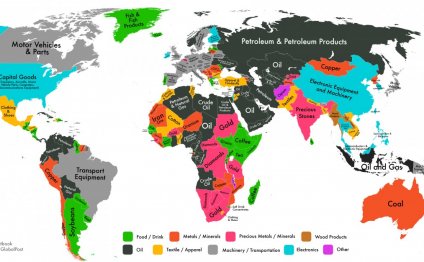
Export Commodities
BETWEEN 2000 and 2011 broad indices of commodity prices tripled, easily outpacing global growth. Since then prices have changed course. Some commodities have endured ferocious price falls: oil peaked at $115 a barrel in June 2014, and by mid-January 2015 was trading at below $50 a barrel and has not risen above $70 since. Such reversals are naturally much better news for net importers of resources than for net exporters. Producing countries, many of which are relatively poor, suffer when prices drop. Our interactive maps display data from the UN Conference on Trade and Development, and show which countries are net importers and exports of primary commodities in general, and of oil, metals and food in particular.

As with all data, there are caveats. Prices affect the numbers: when commodities are expensive, they will account for a larger share of exports and imports. Some producing economies managed the gains from the good times better than others: they have much bigger reserves to cope with falls in prices. That said, the map does suggest which economies, from copper-producing Chile to oil-rich Angola, are most vulnerable to a downward lurch in the commodity cycle.
Dig deeper:
Daily chart: OPEC flexing (Nov 2014)
Bello: The great deceleration (Nov 2014)
RELATED VIDEO



Share this Post
Related posts
Agricultural Programme
The Comprehensive Africa Agriculture Development Programme (CAADP) is Africa’s policy framework for agricultural transformation…
Read MoreForum for Agricultural Research in Africa
The Forum for Agricultural research in Africa (FARA) is an apex organization bringing together and forming coalitions of…
Read More










